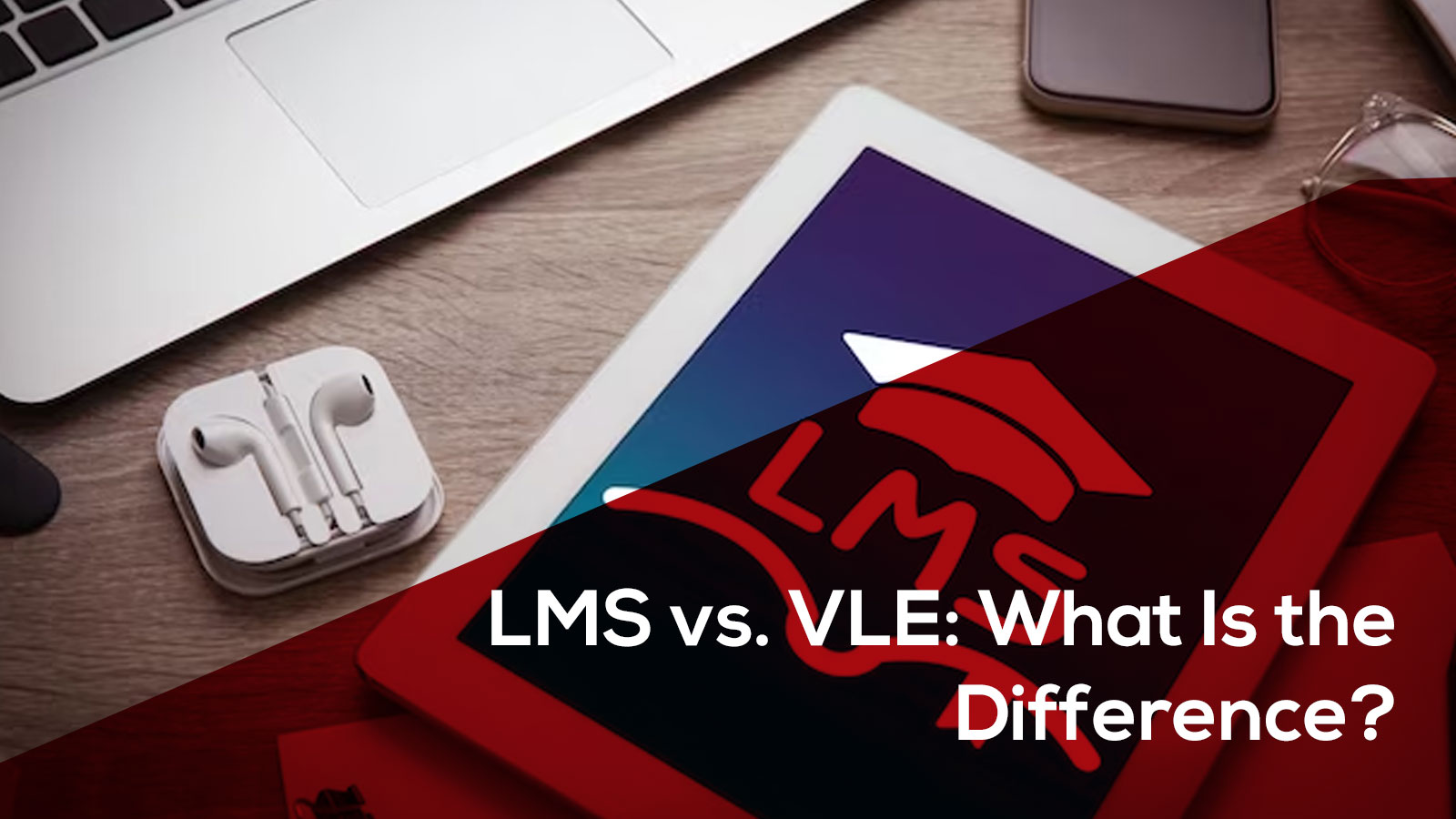Introduction
In the rapidly evolving world of education technology, acronyms like LMS (Learning Management System) and VLE (Virtual Learning Environment) are gaining significance for their features and benefits in transforming the education sector.
In this blog post, we’ll look into LMS and VLE and shed light on how they play distinct roles in digital education.
Understanding the Basics
Learning Management System (LMS)
A Learning Management System (LMS) is a platform that organizes, delivers, and tracks educational content. Think of it as the heart of online learning, where instructors and learners converge to access courses, materials, and assessments seamlessly. LMS platforms provide a structured framework for content delivery, user management, and performance tracking. As of 2022, the global LMS market is projected to reach $22.4 billion by 2027, indicating a compound annual growth rate (CAGR) of 21.0% from 2020 to 2027.
Virtual Learning Environment (VLE)
On the other hand, a Virtual Learning Environment (VLE) involves a broader spectrum of tools and features. It serves as a comprehensive digital ecosystem where learning activities take place, fostering collaboration, communication, and engagement. VLE integrates various elements, including discussion forums, multimedia resources, and interactive assessments, to create an immersive online learning experience. The adoption of VLEs in higher education institutions increased by 40% in the last five years, reflecting a growing trend in the education sector.
LMS vs VLE: Unraveling the Distinctions
Focus and Functionality
LMS:
Focus: LMS primarily concentrates on managing learning content and tracking progress.
Functionality: It streamlines administrative tasks, such as enrollment, progress monitoring, and grading, making it ideal for formal course delivery.
VLE:
Focus: VLE is more comprehensive, emphasizing the entire learning environment, including communication, collaboration, and content delivery.
Functionality: It provides a holistic approach to learning, fostering a sense of community among learners and instructors.
User Interaction and Engagement
LMS:
User Interaction: LMS is transactional, focusing on the efficient delivery of content.
Engagement: While it supports engagement through assessments, LMS may lack the interactive elements that enhance the overall learning experience.
VLE:
User Interaction: VLE fosters a social and collaborative learning environment, encouraging communication and interaction among users.
Engagement: With features like discussion forums, multimedia content, and real-time collaboration tools, VLE promotes active engagement and participation.
Choosing the Right Platform
Considerations for Educational Institutions
Course Structure: If the primary goal is formal course delivery with a focus on content management, an LMS might be the preferred choice.
Holistic Learning: For institutions aiming to create a comprehensive digital learning experience with a strong emphasis on collaboration and engagement, a VLE would be more suitable.
Corporate Training Perspectives
Compliance and Tracking: LMS is instrumental in meeting compliance requirements and tracking employee progress.
Interactive Training: If organizations prioritize interactive and collaborative training sessions, a VLE could enhance the learning experience.
Conclusion: Finding the Right Fit
The choice between LMS and VLE boils down to the specific needs and goals of the educational institution or organization. While LMS streamlines formal course delivery and content management, VLE goes beyond, creating an immersive and collaborative learning environment. The changing landscape of education technology provides opportunities for customization, ensuring that institutions can tailor their digital platforms to meet the unique needs of their learners.
As the digital education landscape advances, understanding the nuances between LMS and VLE becomes crucial. By making an informed choice, educators and organizations can pave the way for a more effective and engaging learning experience, setting the stage for a brighter future in online education.
Frequently Asked Questions (FAQs)
What is the primary purpose of an LMS and a VLE?
The main purpose of Learning Management Systems (LMS) and Virtual Learning Environments (VLE) is to manage, deliver, and track educational content. While both focus on enhancing the learning experience, there are differences in their functionalities and applications.
How does the scope of an LMS differ from a VLE?
An LMS is a broader system designed to manage the entire learning process, including content creation, administration, tracking, and assessment. On the other hand, a VLE typically refers to the online tools and resources that support the delivery of courses.
How do LMS and VLE differ in terms of user management?
LMS systems usually have robust user management capabilities, accommodating diverse user roles such as administrators, instructors, and learners. VLEs, being institution-specific, are tailored to the roles within that educational environment, emphasizing roles like teachers and students.
Are there differences in customization options between LMS and VLE?
LMS platforms often provide extensive customization options to meet diverse needs. VLEs, while customizable, are more standardized within the educational context, aligning with the curriculum and structure of the institution.
How do LMS and VLE address assessment and feedback?
LMS systems facilitate various types of assessments, including quizzes, surveys, and performance tracking for professional development. VLEs support course-specific assessments, exams, and feedback mechanisms tailored to the educational content being delivered.
Are there specific statistics or data tracking features that differentiate LMS and VLE?
LMS platforms often offer detailed analytics and reporting features, tracking learner progress, completion rates, and engagement metrics. VLEs concentrate more on academic performance metrics, providing insights into student progress within specific courses and modules.
How do LMS and VLE cater to collaboration and communication needs?
LMS platforms commonly include communication tools, discussion forums, and chat features, fostering collaboration in professional settings. VLEs, designed for educational environments, prioritize communication channels that support student-teacher interaction, group collaboration, and class discussions.
Can LMS and VLE integrate with other software and tools?
Both LMS and VLE systems often support integrations with third-party tools and software. LMS platforms, however, may have more extensive integration capabilities to accommodate the diverse needs of corporate training, while VLEs focus on educational tools and applications.
Which is more suitable for corporate training, LMS, or VLE?
LMS platforms are well-suited for corporate training due to their comprehensive features, scalability, and adaptability to diverse organizational needs. VLEs, tailored for academic institutions, may not provide the breadth of functionalities required for corporate learning environments.








